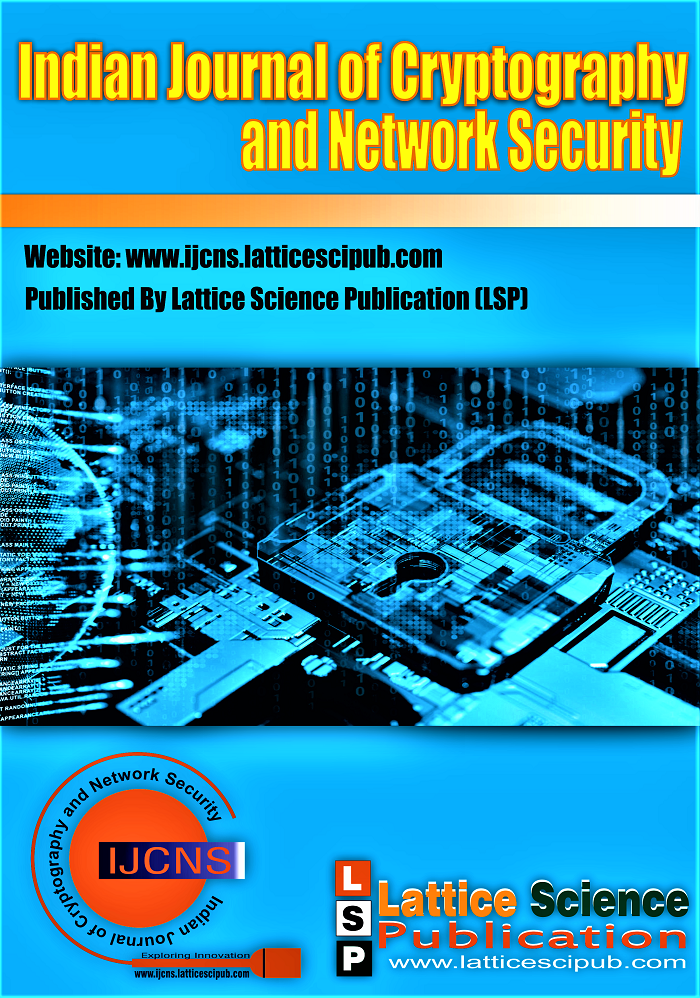An Analytical Approach to Understanding the Principles of Cryptography within the Kaṭapayādi System as Reflected in the Works of Nemicandra
Main Article Content
Abstract
The kaṭapayādi system is an alphabetic system of numeral notation developed in India. The purpose of this paper is to understand the ideas related to cryptography within the kaṭapayādi system, although this system was not developed to hide information. To do this, this paper studies the use of this system in the Gommaṭasāra-Jīvakāṇḍa and Trilokasāra of Nemicandra (981 CE) using an analytical approach. This paper finds that like the Caesar cipher and Vigenère cipher, the ciphertext in this system is also a substitution cipher, but unlike them, the letters of the Sanskrit alphabet substitute the digits of a number in it with no shift. This system provides multiple ways to encrypt a number. It has symmetric encryption. Correctness property is ensured in it. In it, the writer is the one who encrypts the number into ciphertext and the one who decrypts the ciphertext into number is the reader. The key in this system was not a public key, although it was publicly available.
Downloads
Article Details

This work is licensed under a Creative Commons Attribution-NonCommercial-NoDerivatives 4.0 International License.
How to Cite
References
B. B. Datta and A. N. Singh, History of Hindu Mathematics, Part I. Lahore: Motilal Banarsidass, 1935, pp. 63-74. https://archive.org/details/history-of-hindu-mathematics-1-bibhutibhusan-datta-avadesh-narayan-singh/page/n17/mode/2up
S. R. Sarma, “The katapayādi system of numerical notation and its spread outside Keral,” Revue d’histoire des mathématiques vol. 18, issue 1, 2012, pp. 37-66. https://doi.org/10.24033/rhm.167
D. Jadhav, “A mathematical study in historical perspective on early chronograms from Cambodia, Vietnam and Indonesia,” Vidyottama Sanatana, vol. 7, issue 2, 2023, pp. 289-309. https://doi.org/10.25078/vidyottama.v7i2.2480
A. V. Raman, “The katapayadi formula and the modern hashing technique,” in Computing Science in Ancient India (edited by T. R. N. Rao and Subhash Kak). Lafayette, LA: The Centre for Advanced Computer Studies, University of Southwestern Louisiana, 1998, p. 48. https://www.scribd.com/document/345288436/Computing-Science-in-Ancient-India-By-T-R-N-RAO-and-SUBHASH-KAK-pdf IEEE Annals of the History of Computing, vol. 19, issue 4, Oct.-Dec. 1997, pp. 49-52. https://doi.org/10.1109/85.627900
K. L. Priya and R. Parameswaran, “A study on the encoding systems in Vedic era and modern era,” International Journal of Pure and Applied Mathematics, vol. 114, (special) issue 7, 2017, pp. 425-433. https://acadpubl.eu/jsi/2017-114-7-ICPCIT-2017/articles/7/39.pdf
C. Paar and J. Pelzl, Understanding Cryptography. Springer, 2010, p. 3. https://doi.org/10.1007/978-3-642-04101-3
J. Katz and Y. Lindell, Introduction to Modern Cryptography. Chapman And Hall/CRC Press, 2007, pp. 3-4. https://doi.org/10.1201/9781420010756
Jean-Philippe Aumasson, Serious cryptography: A Practical Introduction to Modern Encryption. San Francisco: No Starch Press, 2018, pp. 1-6. ISBN-13: 978-1-59327-826-7.
Paṇḍita Dineśabhāī Śahā (ed.), Samyagjñānacandrikā (Jīvakāṇḍa and Arthasaṃdṛṣṭi) of Toḍaramala, Part I (Translated into Hindi by Dr. Śrīmati Ujjvalā Śahā). Mumbai: Vītarāgavāṇīprakāśaka, 2018, under v. 158, p. 290. https://jainelibrary.org/book-detail/?srno=035932
L. C. Jain and R. K. Trivedi, “Ṭoḍaramala of Jaipur (A Jaina philosopher-mathematician),” Indian Journal of History of Science, vol. 22, issue 4, 1987, pp. 359-371. https://insa.nic.in/(S(n5lexmc3fnnxz3jwkiqawfrh))/writereaddata/UpLoadedFiles/IJHS/Vol22_4_9_RKTrivedi.pdf
D. Jadhav, “Why do I assign 981 A. D. to Nemicandra?,” Arhat Vacana, vol. 18, issue 1, 2006, pp. 75-81.
D. Jadhav, “Nemicandrācāryakṛta granthoṃ meṃ akṣara-saṃkhyāoṃ kā prayoga,” Arhat Vacana, vol. 10, issue 2, 1998, pp. 47-59. https://doi.org/10.25078/vidyottama.v7i2.2480
C. E. Shannon, “Communication theory of secrecy systems,” The Bell System Technical Journal, vol. 28, issue 4, October 1949, pp. 656-715. Doi: https://doi.org/10.1002/j.1538-7305.1949.tb00928.x
D. Boneh and V. Shoup, A Graduate Course in Applied Cryptography. Version 0.6 of a free online book, 1116 pages, January 2023, pp. 4-5. Available at: http://toc.cryptobook.us/.
J. L. Jaini (ed. & tr.), Gommaṭasāra (Jīvakāṇḍa) of Nemicandra. Lucknow: The Central Jaina Publishing House, 1927. https://jainelibrary.org/book-detail/?srno=001612
R. C. Jain Mukhtara and C. P. Patni (eds.), Trilokasāra of Nemicandra (with Mādhavacandra Traividya’s Sanskrit Commentary and Āryikā Viśuddhamati’s Hindi Commentary). Śrī Mahāvīrajī: Śrī Śivasāgara Granthamālā, 1975. https://jainelibrary.org/book-detail/?srno=090512
Labbi, Z., Senhadji, M., Maarof, A., & Belkasmi, M. (2020). Lightweight Cryptographic for Securing Constrained Resource IoT Devices. In International Journal of Innovative Technology and Exploring Engineering (Vol. 4, Issue 9, pp. 181–188). https://doi.org/10.35940/ijitee.d9060.029420
Kosta, B. P., & Naidu, P. S. (2020). Cryptographic Scheme for Lightweight Device Such as IoT using Pseudo Stream Cipher and Trigonometric Technique with Key Generation. In International Journal of Engineering and Advanced Technology (Vol. 9, Issue 5, pp. 825–835). https://doi.org/10.35940/ijeat.e9542.069520
Buddha, G. P. (2024). Leveraging Cryptographic Hash Functions for Credit Card Fraud Detection. In International Journal of Recent Technology and Engineering (IJRTE) (Vol. 13, Issue 1, pp. 16–21). https://doi.org/10.35940/ijrte.f8019.13010524
Velani, J., & Patel, Dr. S. (2023). A Review: Fraud Prospects in Cryptocurrency Investment. In International Journal of Innovative Science and Modern Engineering (Vol. 11, Issue 6, pp. 1–4). https://doi.org/10.35940/ijisme.e4167.0611623
Kaur, Dr. H., & Kaur, Prof. A. (2021). Cryptography in Cloud Computing. In Indian Journal of Cryptography and Network Security (Vol. 1, Issue 1, pp. 1–2). https://doi.org/10.54105/ijcns.a1402.051121





